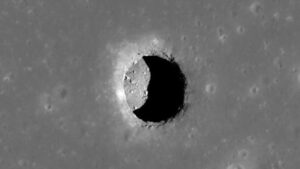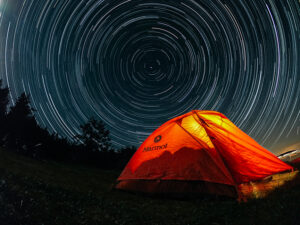A passion for the natural world drives many of our adventures. And when we’re not outside, we love delving into discoveries about the places we live and travel. Here are some of the best natural history links we’ve found this week.
Interspecies adoption seen in whales: A drone photographer accidentally captured an adult southern right whale swimming with a humpback whale calf in Australia.
She quickly sent the footage to Katy Fannai, a marine researcher. Fannai thinks it is a rare example of interspecies adoption because of how close the adult and calf are as they swim.
Though rare, it is not the first time it has been seen. Researchers have seen orcas displaying similar behavior and taking in abandoned calves from other pods. Fannai plans to follow the interactions between the two whales to see if the behavior persists.
Lurking asteroid
‘Planet killer’ discovered: The largest asteroid in eight years is going to cross Earth’s orbit. Researchers found asteroid 2022 AP7 while looking for space rock within the orbits of Earth and Venus.
The asteroid is between 1.1km and 2.3km in diameter and is the largest discovered since 2014. It is also in the top 5% of the largest asteroids astronomers have found.
Scientists consider any asteroid over 1km a planet killer. If an asteroid this big hit the Earth, it would trigger a mass extinction event. Fortunately, it is not going to come close to us any time soon.
“We do not know the orbit of 2022 AP7 precisely enough to say much about its dangers centuries from now,” astronomer Scott Sheppard explained.

The Principe Scops-Owl. Photo: Martim Melo / SWNS
New species of owl with a unique call discovered in Africa: Naturalists have discovered the Principe Scops-Owl on the island of Principe off the west coast of Africa. Scientists have suspected the presence of a new species since 1998 but only located the bird in 2016.
The owl is most easily recognized by its unusual call. It repeats a short “tuu” note about once per second. It sounds similar to many insect calls. The owl lives in the only old-growth native forest on the island. The area is only four times the size of Central Park in New York, but it holds up to 1,500 owls, according to estimates. Despite the seemingly high numbers, researchers want the species classified as critically endangered, since it only occurs in this one area.
A glut of rhododendrons
Rhododendrons living in harmony: The mountains of southwestern China are home to over 272 species of native rhododendrons. This is highly peculiar since in all other areas, they compete for pollinators.
Over the summer, researchers studied the flowering patterns of 34 species. The different species all bloomed at different times throughout the season. This explains how they can flourish in such proximity. Blossoming at different times greatly reduces the competition for pollinators.
“It’s a basic need for species to mate only with others of their species, which seems to be why these have adjusted their flowering schedules to try to minimize interference from their neighbors,” said Richard Ree, curator of flowering plants at the Chicago Field Museum.

Flowering rhododendrons. Photo: Shutterstock
New dinosaur species discovered: Paleontologists have discovered a new species of dinosaur in southern Nevada.
The thescelosaurine dinosaur, measuring 0.6m tall and 1.8m long, lived between 100 and 94 million years ago. Analysis of the fossilized remains shows it ran on two legs and had a beak. The new species is the earliest fossil record of thescelosaurines in North America.






